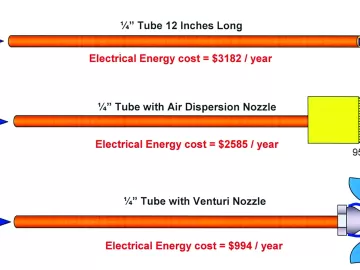Understanding Controls for Multiple Centrifugal Air Compressor Systems
Load-sharing is an important part of a multiple centrifugal-compressor master control system. It minimizes blow-off based on the available turn-down. In addition, remote start-stop saves more energy if load floats between different ranges. Finally, adding a screw compressor and implementing a hybrid control system might save the most energy and provide the best back-up. In any case, a well-instrumented system allows engineers and operators to assess, optimize and tune the system.












